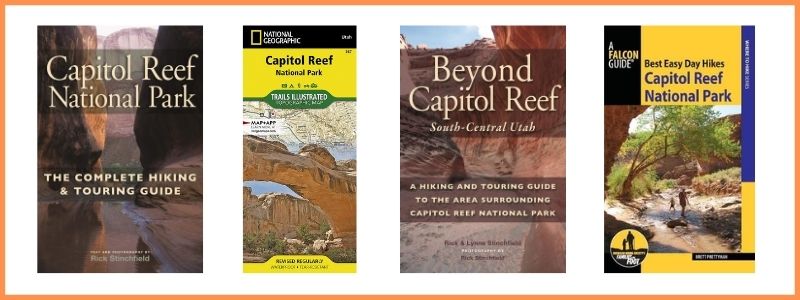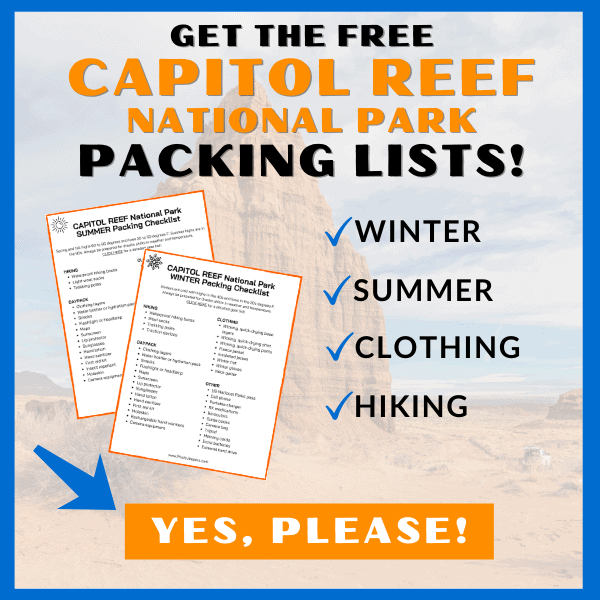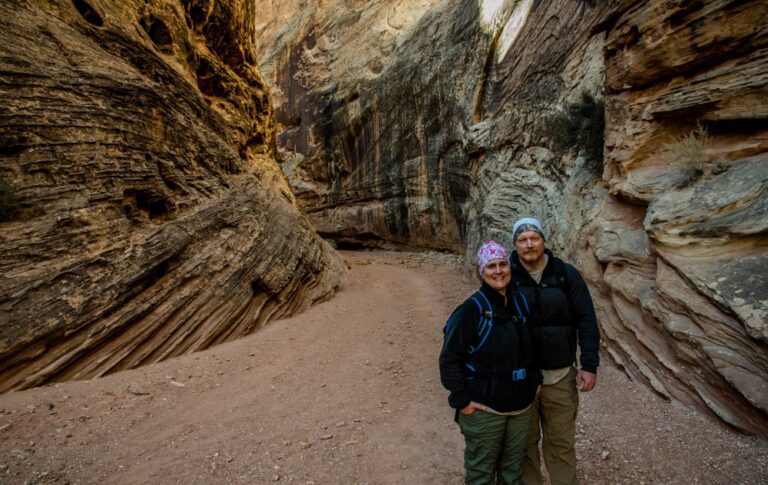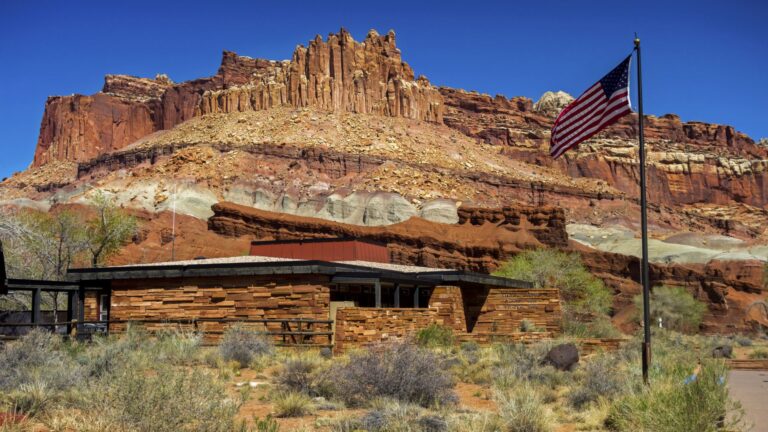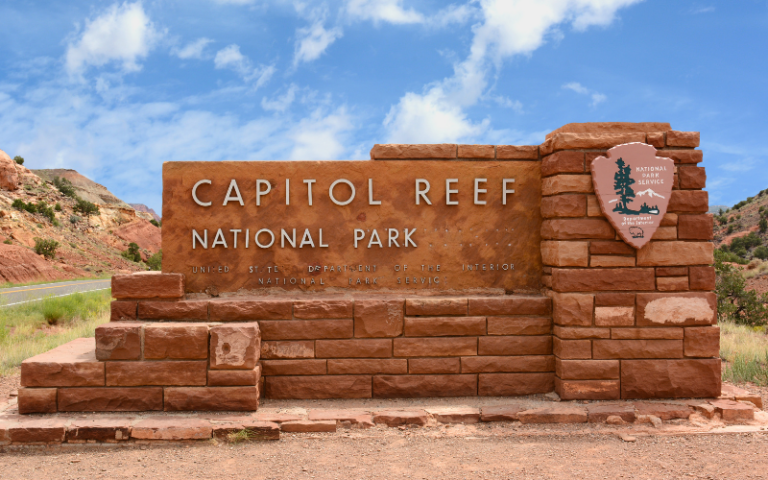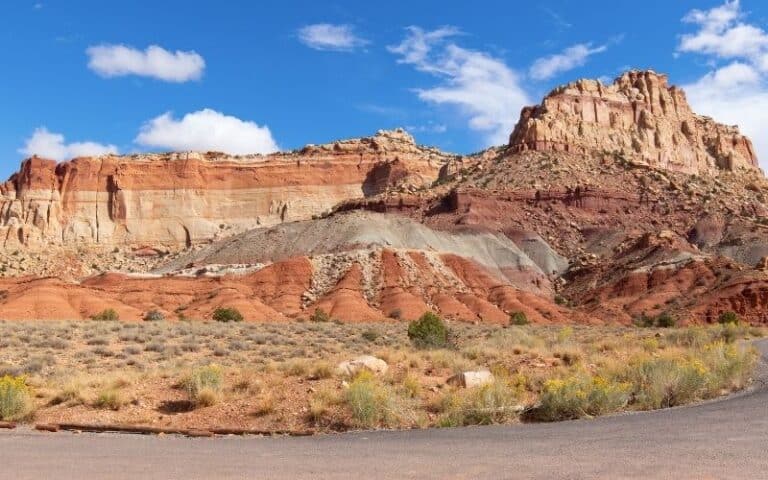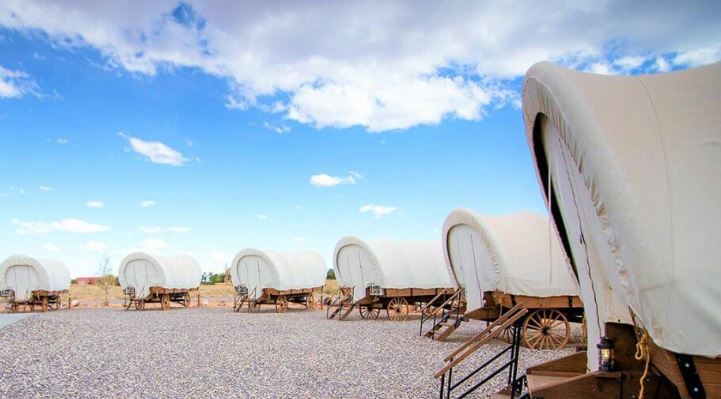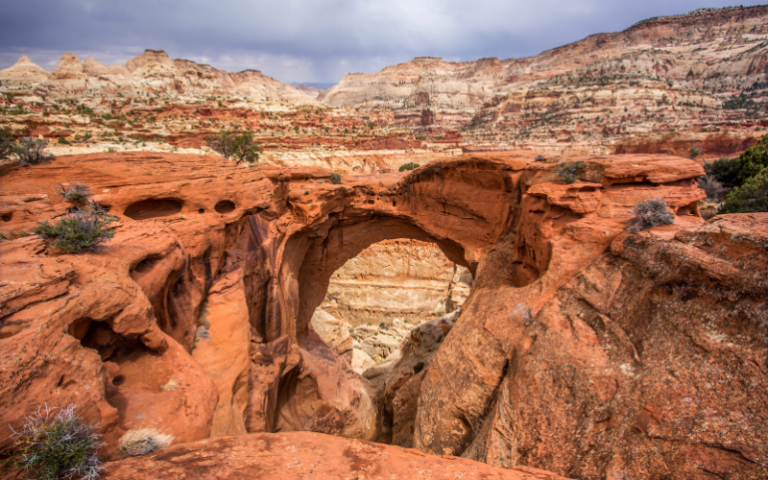Visiting Capitol Reef National Park in the Spring
Taking a trip to Capitol Reef National Park in the Spring is a great time to go because the weather is “just right” to enjoy outdoor activities at this park.
Use this Capitol Reef National Park guide to plan your spring vacation: things to do, what to pack, where to stay, and services available.
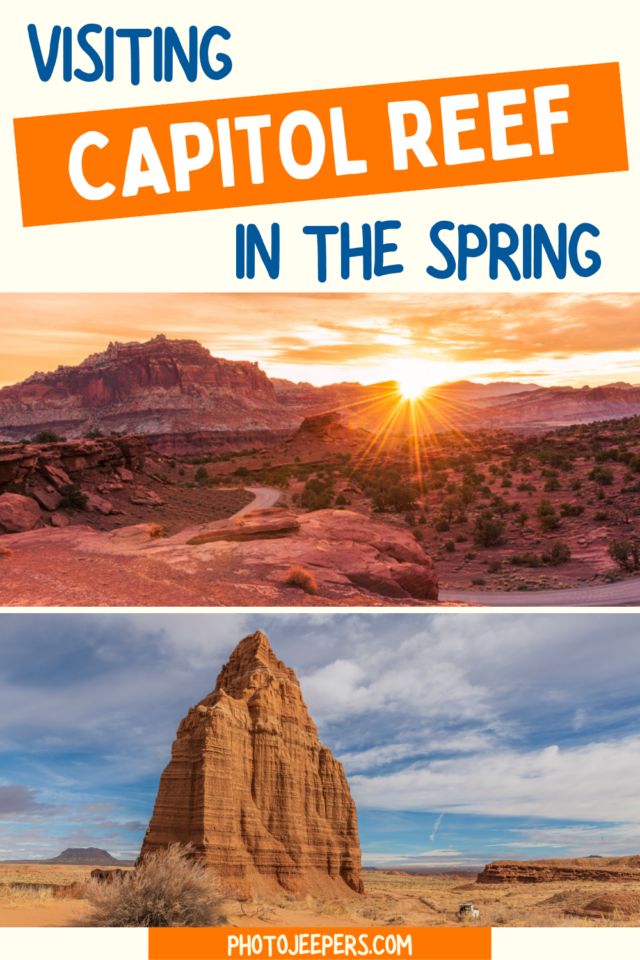
At this Utah National Park you can enjoy Capitol Reef spring activities like hiking, scenic drives, photography, and more!
Grab our Capitol Reef travel bundle with printable 1, 2 and 3-day itineraries to easily plan your vacation!
- Capitol Reef National Park in one day
- Two days in Capitol Reef National Park
- Three days in Capitol Reef National Park
This site contains affiliate links which means WE may receive commissions for purchases made through these links. We only provide links to products we actually use and/or wholeheartedly recommend! As an Amazon Associate, we earn from qualifying purchases. Read the full Disclosure Policy.
A Photo Tour of Capitol Reef National Park
Take a visual tour through Capitol Reef National Park to see the stunning landscape and wildlife you’ll find in the park!
Capitol Reef National Park in the Spring
Located in south-central Utah, you’ll see a landscape filled with cliffs, canyons, domes, and bridges when visiting Capitol Reef National Park.
The park and campgrounds are open 24 hours a day, 365 days a year. The Visitor Center is open daily except for major holidays. The Gifford House Store and Museum is usually open from March 14 (Pi Day) to the end of October. Check the website for the most updated information.
The best time to visit Capitol Reef National Park is during the most temperate seasons in the spring (April through May).
Spring Weather at Capitol Reef
Do your research to know what the Capitol Reef National Park weather will be like for the dates you plan to visit.
- Capitol Reef in March: highs 55 | lows 31 degrees F
- Capitol Reef in April: highs 64 | lows 37 degrees F
- Capitol Reef in May: highs 73 | lows 46 degrees F
With the temperatures changing so much throughout the day, it is especially important to dress in layers. Spring is also the rainy season so be aware of weather before entering any slot canyon!
Spring Break Crowds at Capitol Reef
Spring weather draws people to all five Utah National Parks. It’s the best time of year to truly enjoy the outdoors in this desert landscape.
BUT that means Capitol Reef is also a popular spring break destination so it may be more crowded during that time.
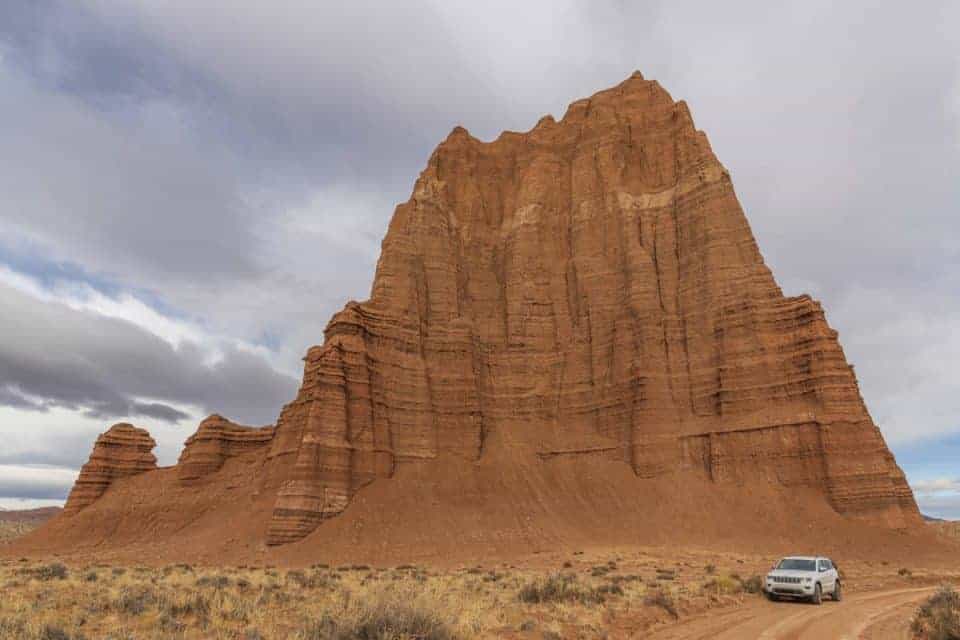
Things to Do at Capitol Reef in the Spring
Check out all the fun things to do at Capitol Reef National Park!
Capitol Reef Visitor Center and Ranger Programs in the Spring
Exhibits, bookstore, general information, toilets, and park rangers on duty. You can get drinking water inside (during open hours) or outside (24 hours a day).
Capitol Reef ranger-led programs are a great way to learn about Capitol Reef. The programs available in the spring are geology talks, evening programs and the Junior Ranger Program for kids!
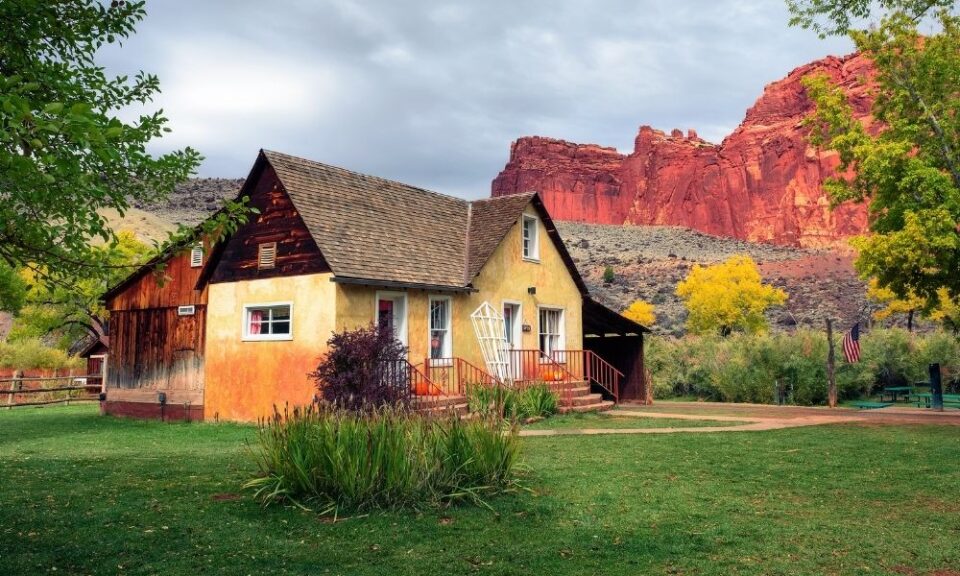
Fruita Gifford Farm in the Spring
The Fruita valley includes the Gifford Homestead, blacksmith shop, barn and orchards.
Be sure to stop by the Gifford house where unique handmade items are made by local artisans like quilts, aprons, woven rugs, soap, crockery, candles and toys. Our favorite part is eating the locally baked fruit pies and homemade ice cream!
In the spring the fruit orchards will be blooming, which is pretty. The Capitol Reef orchards harvesting times usually runs mid-June to mid-October.
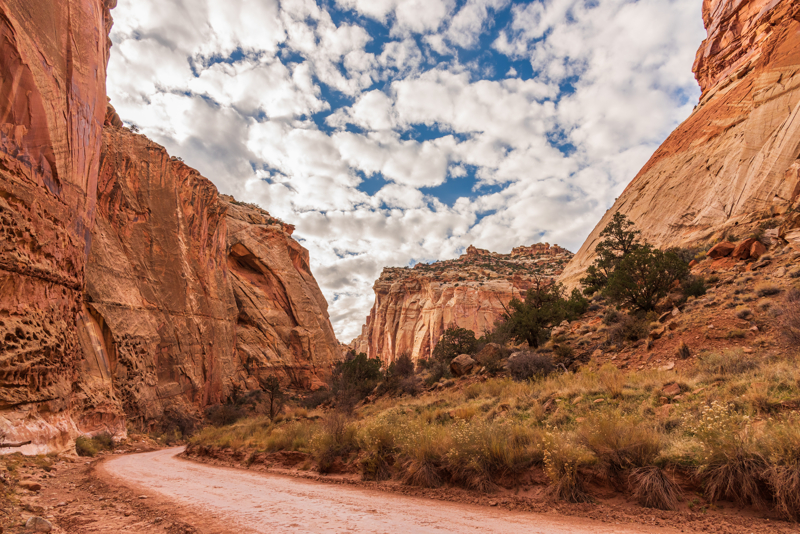
Capitol Reef Scenic Drives in the Spring
The Capitol Reef scenic drive is a must-do activity to explore the cliffs, canyons, domes and bridges! The paved road is 7.9 miles long and suitable for passenger vehicles. Since it’s not a loop road, you’ll drive back the way you came.
There are two dirt spur roads off the scenic drive: Grand Wash and Capitol Gorge. Passenger cars and RVs up to 27 feet in length are fine to drive the road.
In the spring the Scenic Drive, Grand Wash, and Capitol Gorge roads can be closed due to snow, ice, mud, and flash floods.
We recommend the Capitol Reef GyPSy Guide App to hear fun behind-the scenes stories and local tips that play automatically as you drive, based on your GPS location.
The Cathedral Valley District scenic drive is in a remote, rugged area of Capitol Reef. Usually, vehicles with high ground clearance, even without four-wheel drive, can drive the roads without difficulty.
The Waterpocket District scenic drive is located in the southern section of Capitol Reef. It’s also fairly remote and rugged, but most passenger cars, pickups, and vans can usually negotiate the roads without difficulty.
BUT spring rains can leave these roads muddy, washed out, and impassable to the best high-clearance four-wheel drive vehicle, so check at the visitor center before heading out!!
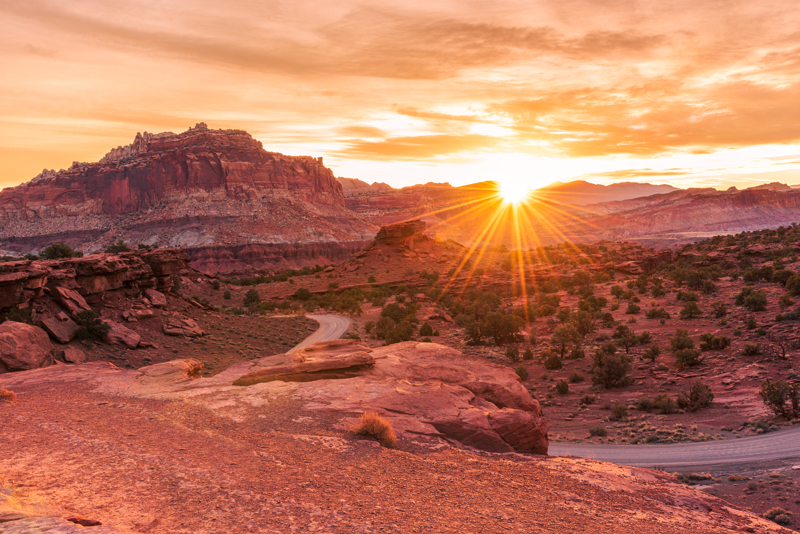
Photography at Capitol Reef in the Spring
The landscape you’ll see at Capitol Reef is spectacular so of course you want to take pictures!
Here’s a list of our favorite places for Capitol Reef National Park photography:
- Sunrise: Panorama Point and Sunset Point
- Sunset: Panorama Point, Sunset Point, and along the scenic drive to capture the reflected light on the canyon walls.
Spring Stargazing at Capitol Reef
There is a reason why Capitol Reef is internationally recognized as one of the best places to stargaze.
The skies are clear and with the park in a remote location it allows you to get some of the most incredible views of the night sky that you will ever see.
Spring is the perfect time to photograph the milky way at Capitol Reef too! Here are the times the milky way is visible in the spring:
- March – 3:00 am to 5:45 am
- April – 1:00 am to 4:45 am
- May – 11:00 pm to 4:00 am
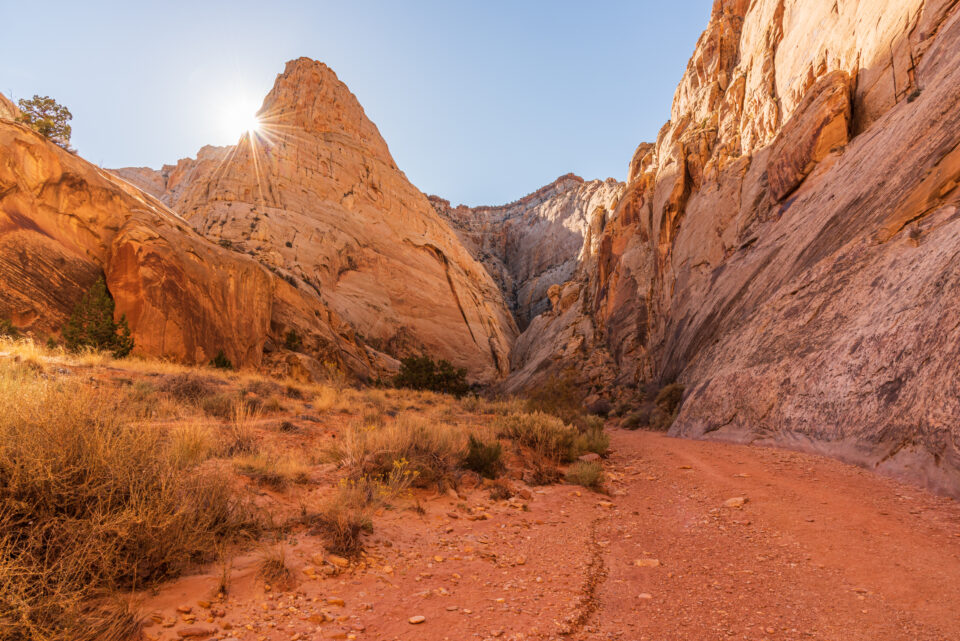
Spring Hiking at Capitol Reef
There are so many Capitol Reef hikes to choose from! There are trails for families, casual visitors who want to explore, and then the avid hikers that want a real adventure.
Some of the best day hikes in Capitol Reef National Park are: Hickman Bridge, Grand Wash and Capitol Gorge Wash.
Keep in mind the park’s elevation is 5500 feet. If you’re coming from a lower elevation, or from sea level, trails that are considered “easy” might be more difficult for you.
When hiking at Capitol Reef in the spring it is especially important that you take the proper gear and plenty of water.
When it rains heavily over a short period of time the result can be flash floods. Get up-to-date Capitol Reef weather information and watch for changing weather conditions. DO NOT enter a narrow gorge or slot canyon if storms are threatening!
- Day Hike Checklist
- What to Bring on a Hike
- Photography Gear for Hiking
- Hiking Gear for Kids & Tips for Hiking with Kids
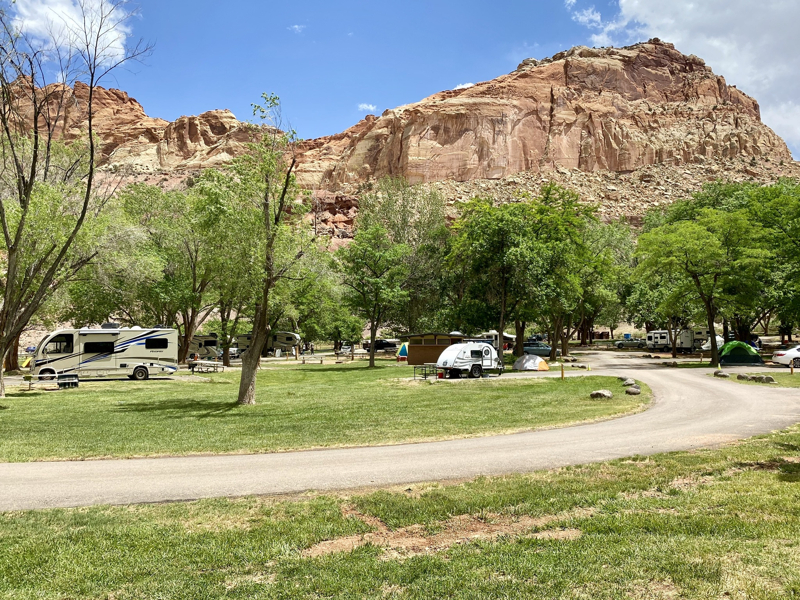
Spring Camping at Capitol Reef
There are a few options for Capitol Reef National Park camping. There’s a large developed campground in the Fruita area. This is a popular place to stay and fills quickly. Reservations are available from spring to fall.
You’ll also find Capitol Reef primitive campgrounds in the remote parts of the park in Cathedral Valley and along the Notom-Bullfrog Road.
If you can’t get a camping spot in the park, there are some RV Parks near Capitol Reef National Park that are only a short drive away.
Plan a Capitol Reef Vacation
- Capitol Reef National Park Guide
- Capitol Reef National Park Packing List
- Best Time to Visit Capitol Reef National Park
- Things to Do in Capitol Reef National Park
Places to Stay Near Capitol Reef
- Places to Stay at Capitol Reef National Park
- Capitol Reef National Park Camping
- Hotels near Capitol Reef National Park
- RV Parks Near Capitol Reef National Park
- Capitol Reef Resort – this is where we stay! Make it a unique experience and stay in a teepee or covered wagon!
- Austin’s Chuckwagon Motel – basic rooms and cabins with a deli and store right on the property which is so convenient!
- Vacation Rentals Near Capitol Reef – we like finding a place with a kitchen so we can prepare our own food.


